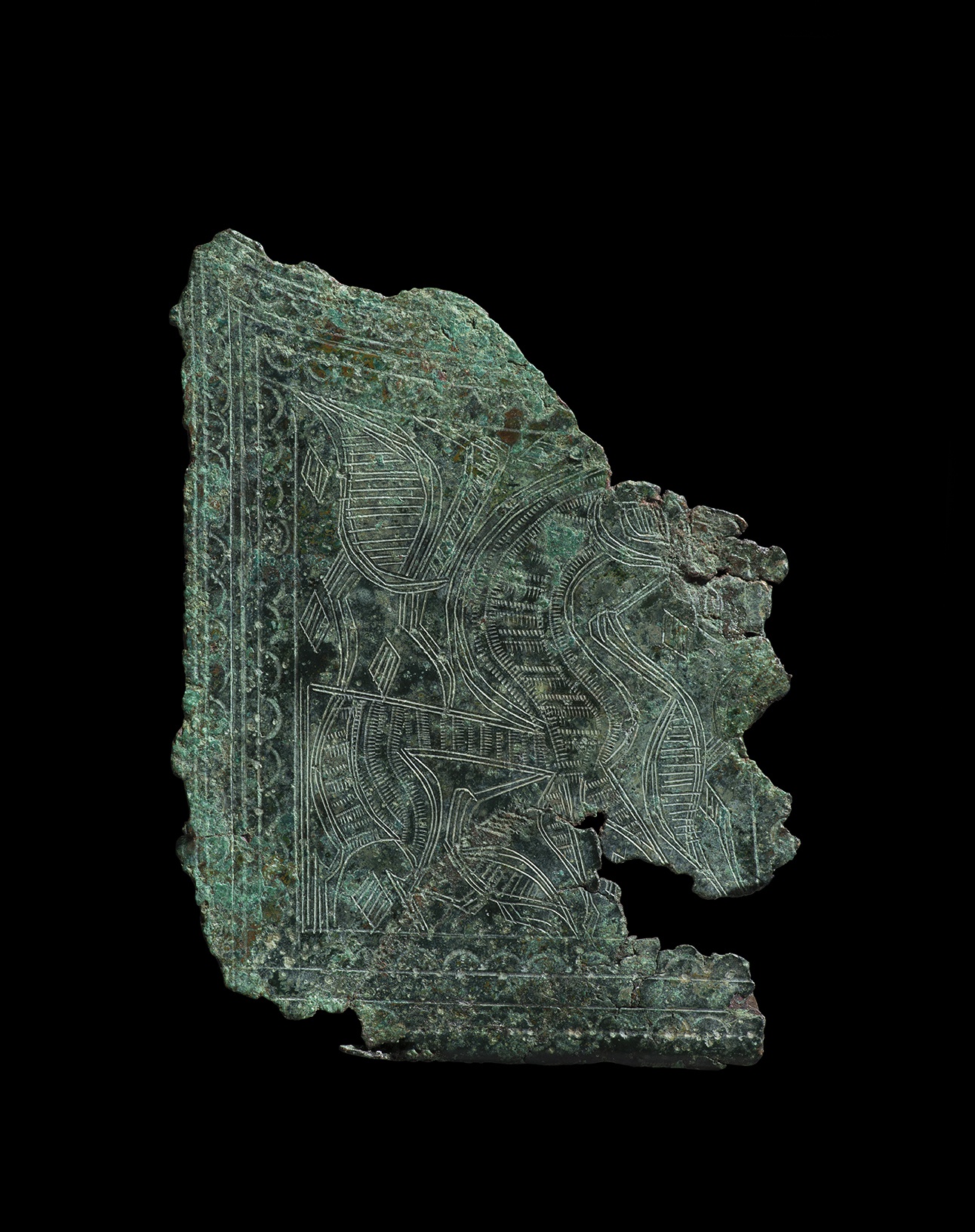
So, this odd green shape has caught your eye, curiosity aroused you've scrolled down to discover a bit more about it. But before I say anything, place your thumb and finger on the screen and zoom in on the images then come back down here for the words.
What did you see? Lines, cross-hatching, and geometric shapes? Any wiser? Well, it's a rather bucolic scene. There's a horse, a 'Greek geometric' horse, standing in a field in profile looking to the right, his body precisely rendered as an amalgam of curves and short, straight lines. There are bands of stippling for the body, parallel lines for the mane and tail, and some random lozenge shapes fill spare space in-between. The horse is surrounded by three long-billed birds: in the upper left above the horse, one turns back on itself, a second bird is drawn in front of the horse's breast, and a third stands between its legs, beak aloft. Turn the plate over and there are stylised fish (salmon?) swimming across the surface - zigzags run down their long bodies. Have another look.
It's a fragment of a catch-plate from a fibula (brooch), light, fragile as a dried leaf, yet a vital, eloquent survivor from the beginning of European culture; a miniature of art history and as refined a visual 'take' as any abstract drawing. Picasso dreamt of this degree of sophistication in pattern-making, his thieving magpie eye trawled images in books and museums to revitalise the tired art that filled the salons and studios of the early 20th century.
They say green is the colour of spring. Confined as we are to our personal, often urban, spaces, how one wishes to be out there in the air and sun with these three representatives of boundless nature: the horse galloping across the earth; the birds free in the air; and the fish swimming in the sea...ok, ok, it may be a bit cold for the swimming bit right now.
Greek catch-plate fragment
Boeotia, Late Geometric II, c.720-680 BC
Bronze
Dimensions 6x4.6cm
Provenance:
Private collection, UK; acquired prior to 1956, thence by descent